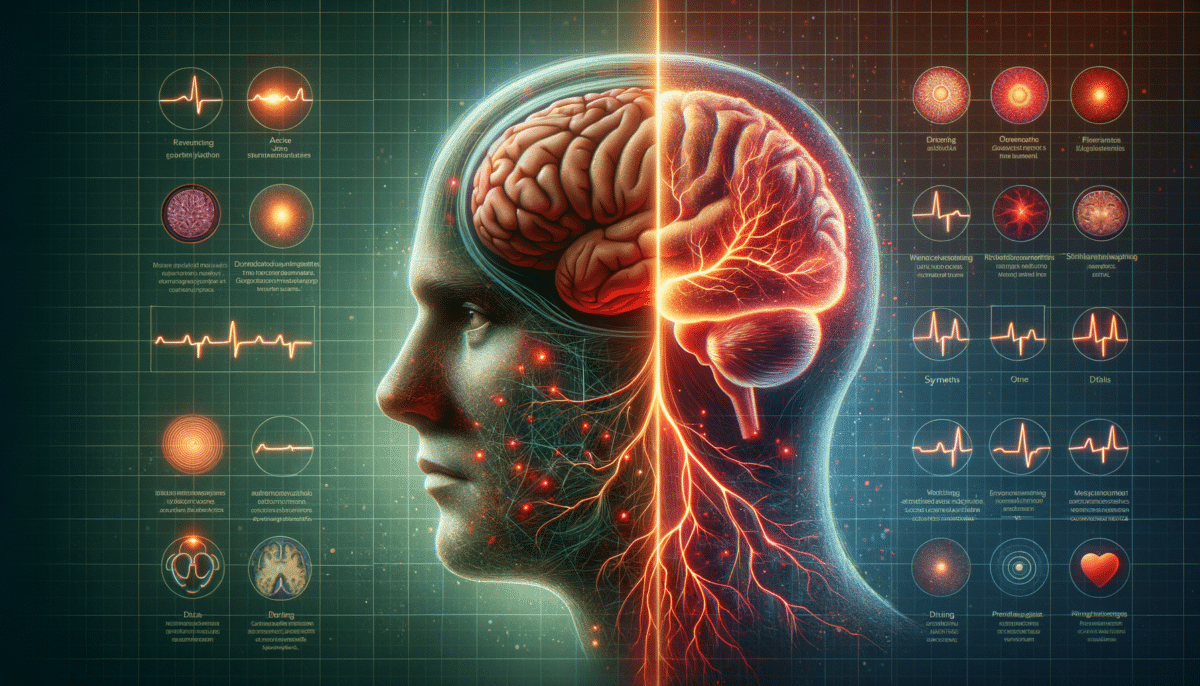Recognizing the Early Signs of a Stroke
Recognizing the early signs of a stroke can be the difference between life and death. A stroke occurs when blood flow to a part of the brain is interrupted or reduced, preventing brain tissue from getting oxygen and nutrients. The symptoms appear suddenly and can vary significantly depending on the type and severity of the stroke. The most common early signs include sudden numbness or weakness in the face, arm, or leg, especially on one side of the body. This can be accompanied by confusion, trouble speaking, or understanding speech.
Other symptoms might include sudden trouble seeing in one or both eyes, difficulty walking, dizziness, loss of balance or coordination, and severe headache with no known cause. It is crucial to act quickly if any of these symptoms are observed. The acronym FAST is often used to remember the warning signs: Face drooping, Arm weakness, Speech difficulties, and Time to call emergency services. Quick response can significantly improve the chances of recovery and reduce the risk of long-term disability.
Different Types of Stroke and Their Symptoms
Strokes can be categorized into three main types: ischemic, hemorrhagic, and transient ischemic attacks (TIAs), commonly known as mini-strokes. Each type has distinct symptoms and causes. Ischemic strokes, the most common type, occur when a blood clot blocks or narrows an artery leading to the brain. Symptoms include sudden numbness or weakness, especially on one side of the body, and difficulty speaking or understanding speech.
Hemorrhagic strokes, on the other hand, occur when a blood vessel in the brain bursts, leading to bleeding in or around the brain. This type often presents with symptoms like a sudden, severe headache, nausea, vomiting, and a loss of consciousness. TIAs are temporary blockages that mimic stroke symptoms but typically last only a few minutes and don’t cause permanent damage. However, they are serious warning signs and require immediate medical attention to prevent a full-blown stroke.
Understanding the Causes of Stroke
The causes of stroke are diverse and often interrelated. High blood pressure is one of the leading causes, as it can damage and weaken the brain’s blood vessels, making them prone to rupture or blockage. Other significant risk factors include smoking, obesity, diabetes, high cholesterol, and excessive alcohol consumption. These conditions can lead to the buildup of fatty deposits in the arteries, known as atherosclerosis, which can result in clots that obstruct blood flow to the brain.
In addition, atrial fibrillation, a type of irregular heartbeat, can cause clots to form in the heart, which can then travel to the brain. Certain lifestyle factors, such as a sedentary lifestyle and poor diet, also contribute to stroke risk. Understanding these causes is vital for prevention, as many risk factors can be managed or modified through lifestyle changes and medical treatment.
Prevention and Risk Management
Preventing a stroke involves managing risk factors and making healthy lifestyle choices. Regular exercise, a balanced diet rich in fruits, vegetables, and whole grains, and maintaining a healthy weight are fundamental steps. It’s also crucial to manage underlying health conditions like hypertension, diabetes, and high cholesterol through medication and regular check-ups.
Smoking cessation is one of the most effective ways to reduce stroke risk, as smoking contributes to the narrowing of arteries and increased blood pressure. Limiting alcohol intake and avoiding illicit drug use are also important preventive measures. Regular medical screenings can help detect and manage risk factors early, significantly reducing the likelihood of a stroke.
Importance of Immediate Medical Attention
When it comes to stroke, time is of the essence. Immediate medical attention can save lives and reduce the risk of long-term disability. Treatments for stroke are most effective when administered as soon as possible after symptoms begin. For ischemic strokes, clot-busting medications can restore blood flow to the brain if given within a few hours of symptom onset.
In some cases, surgical procedures may be necessary to remove clots or repair damaged blood vessels. The sooner a stroke is treated, the better the outcomes. Therefore, recognizing the symptoms and acting quickly by calling emergency services can make a significant difference in the recovery process.
